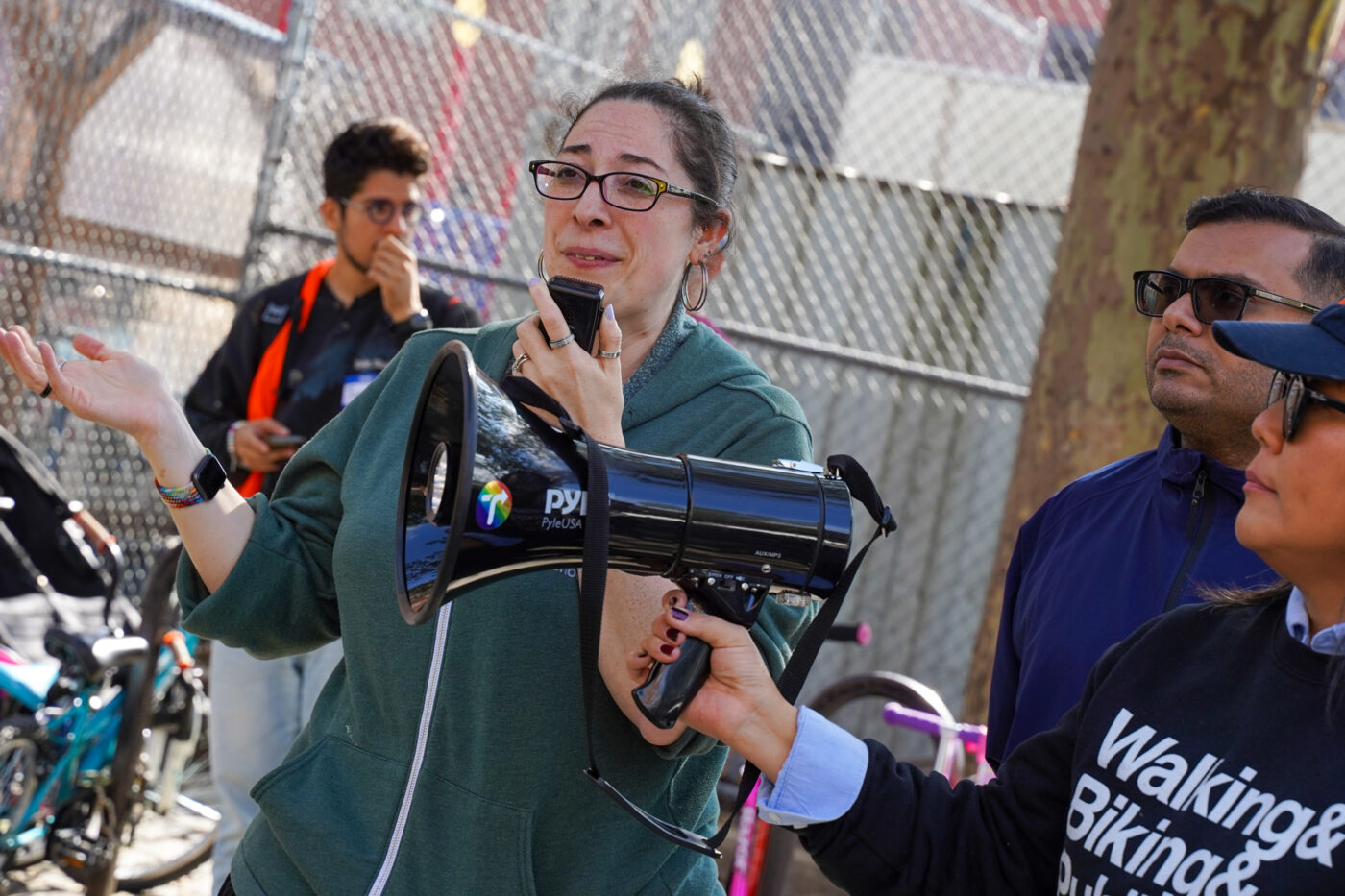Dressed in uniforms of bright yellow jackets with “Bike Bus” emblazoned on the back, the foot soldiers of America’s burgeoning bike bus movement came together in Brooklyn today. But instead of leading kids, they led bike bus advocates and fans from across the country.
In just a few short years, the simple act of riding bikes to school together has gone from lone advocates in a few schools, to a bona fide national movement. At today’s ride, organized as part of the Vision Zero Cities Conference hosted by nonprofit Transportation Alternatives, there was a sense that the disparate efforts that have blossomed in the past two years or so are beginning to gel.
And leaders of bike buses in Oregon can take some of the credit for the momentum.
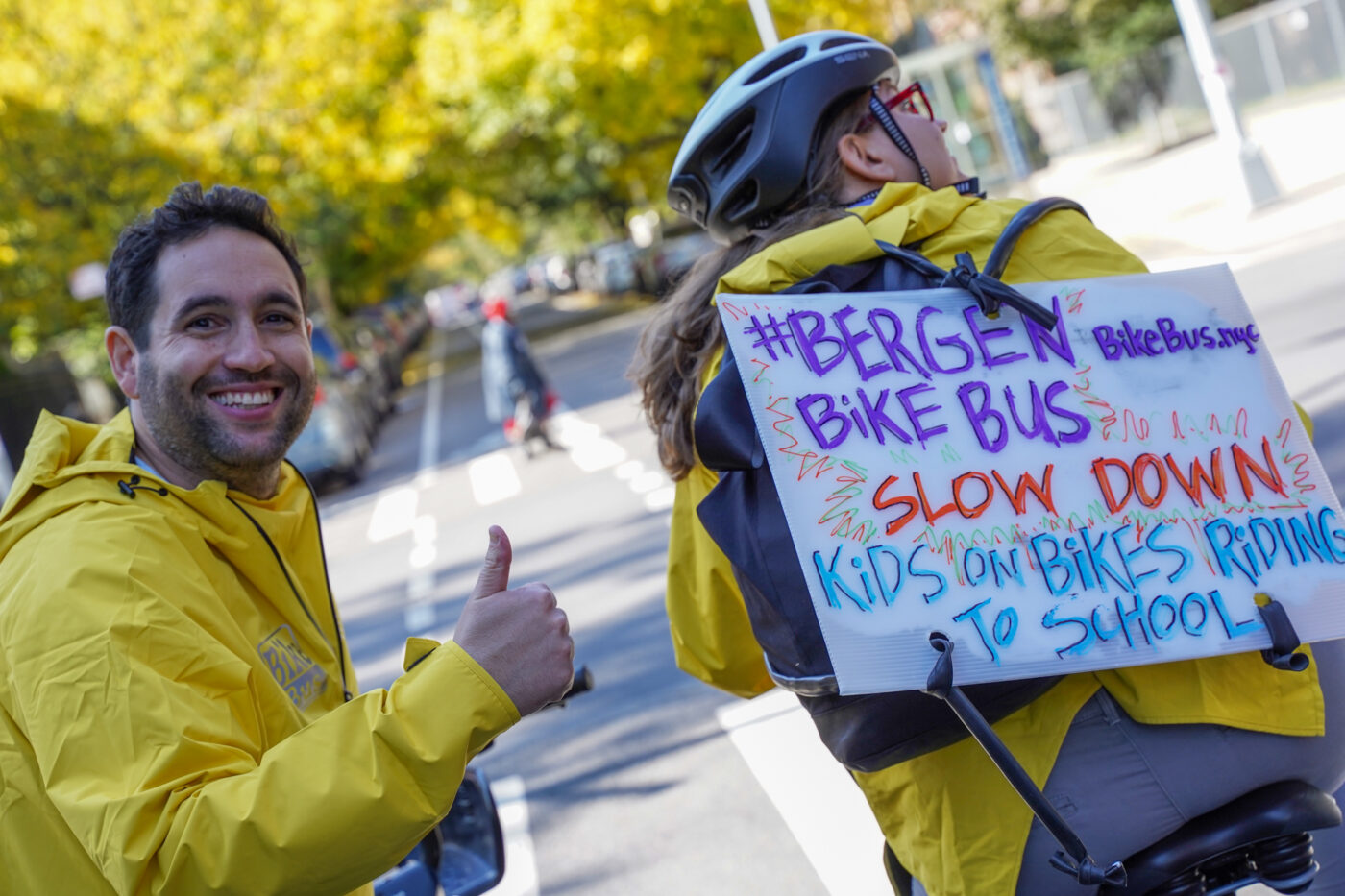
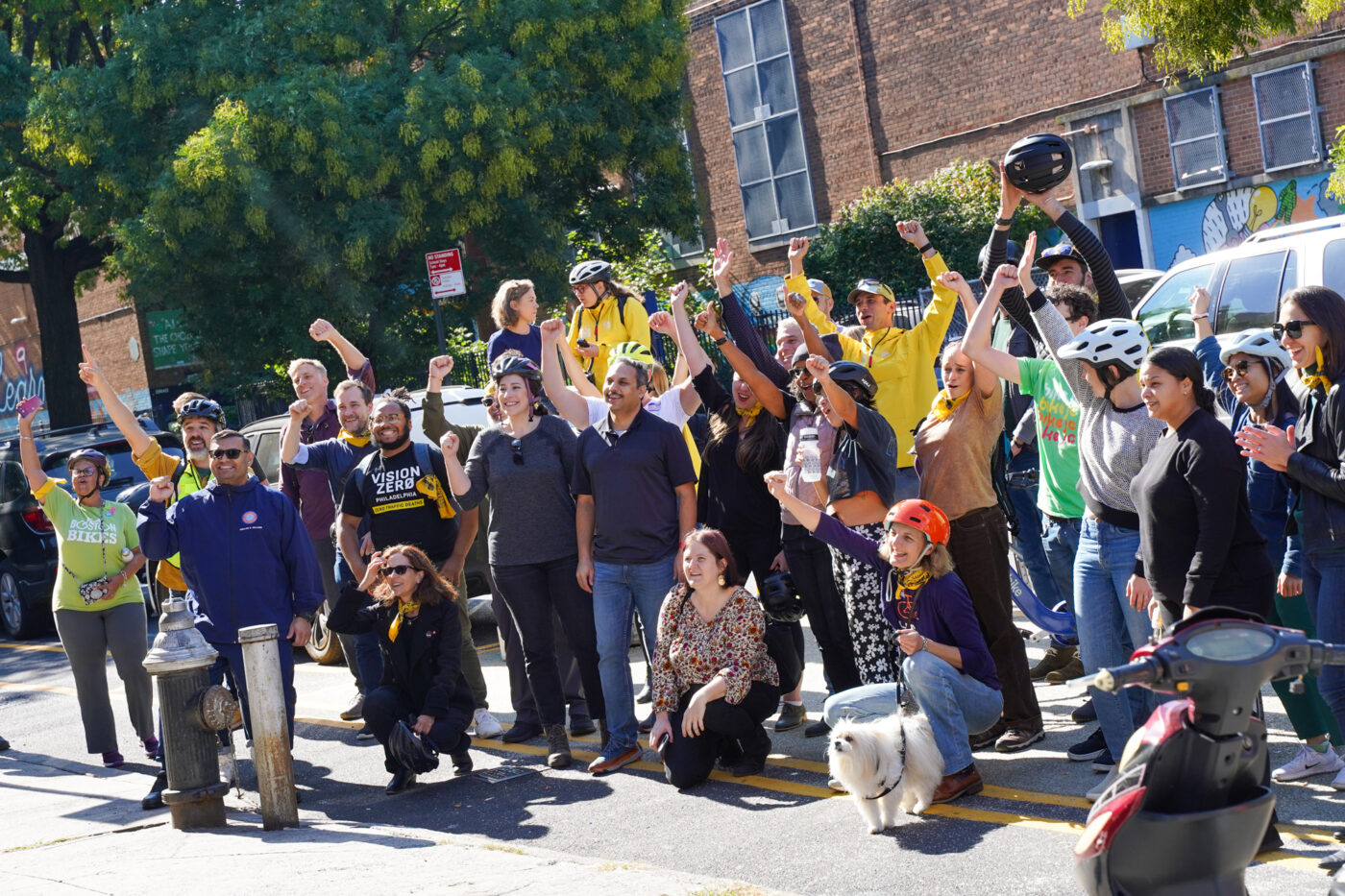
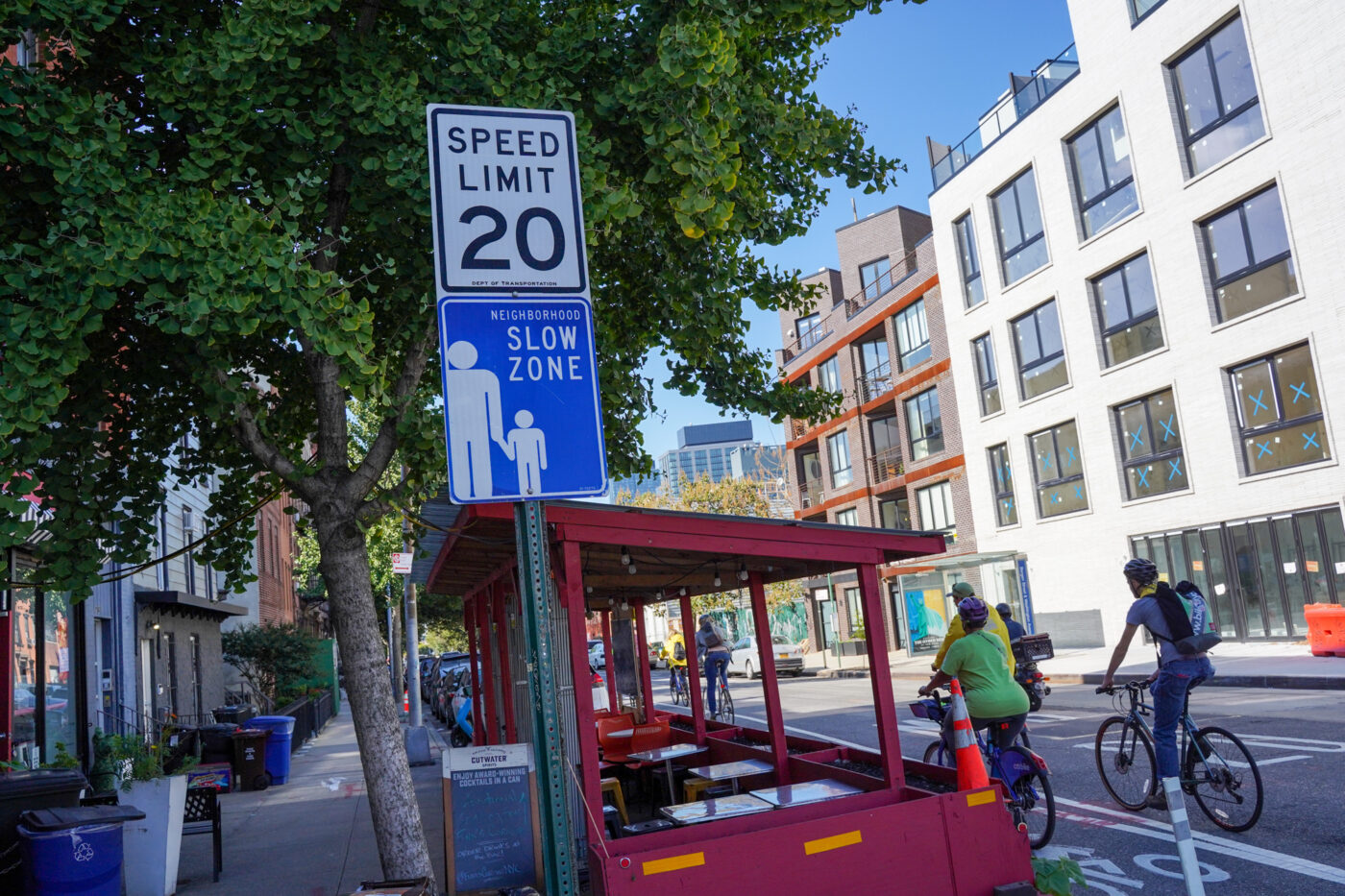
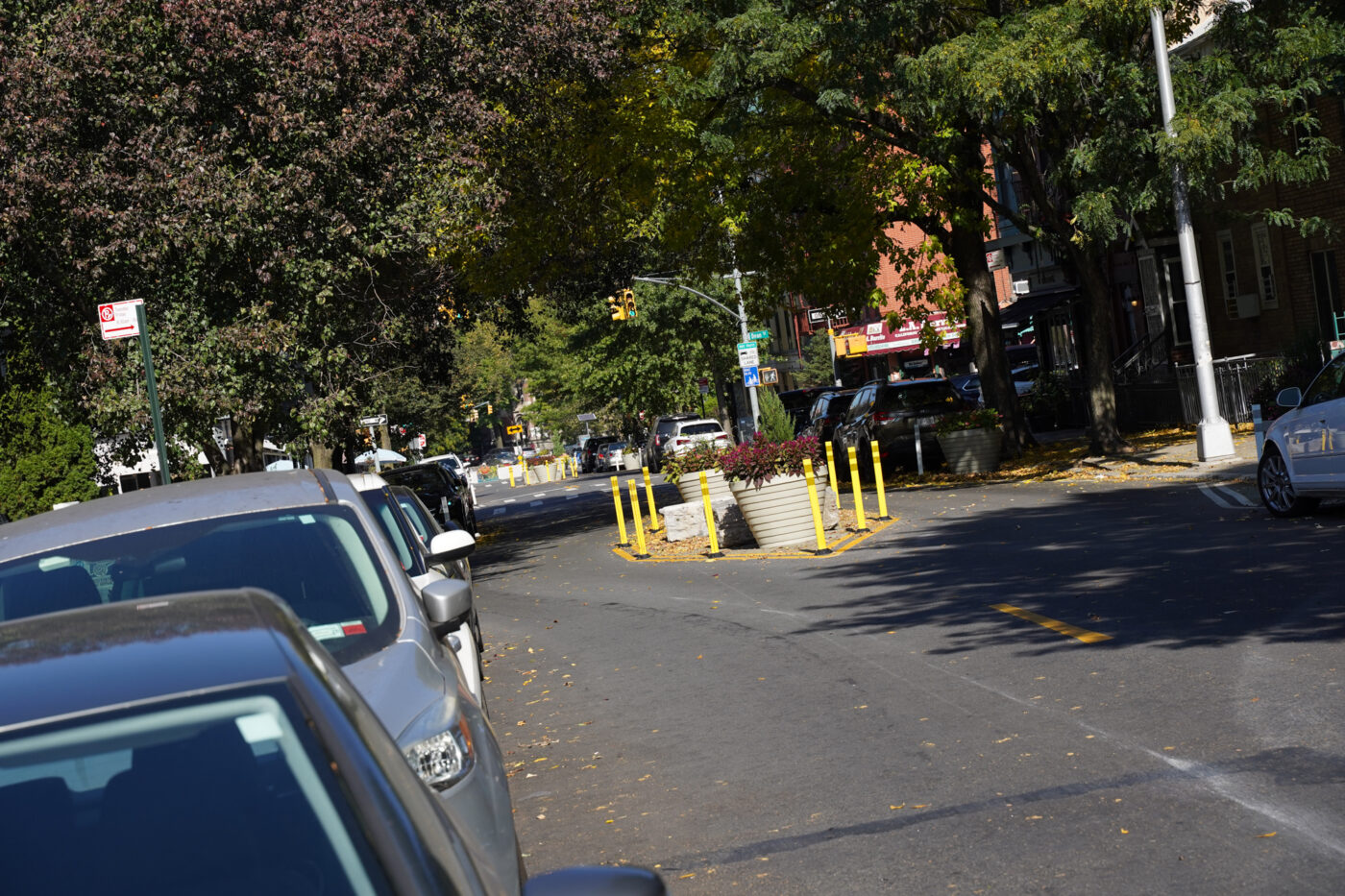
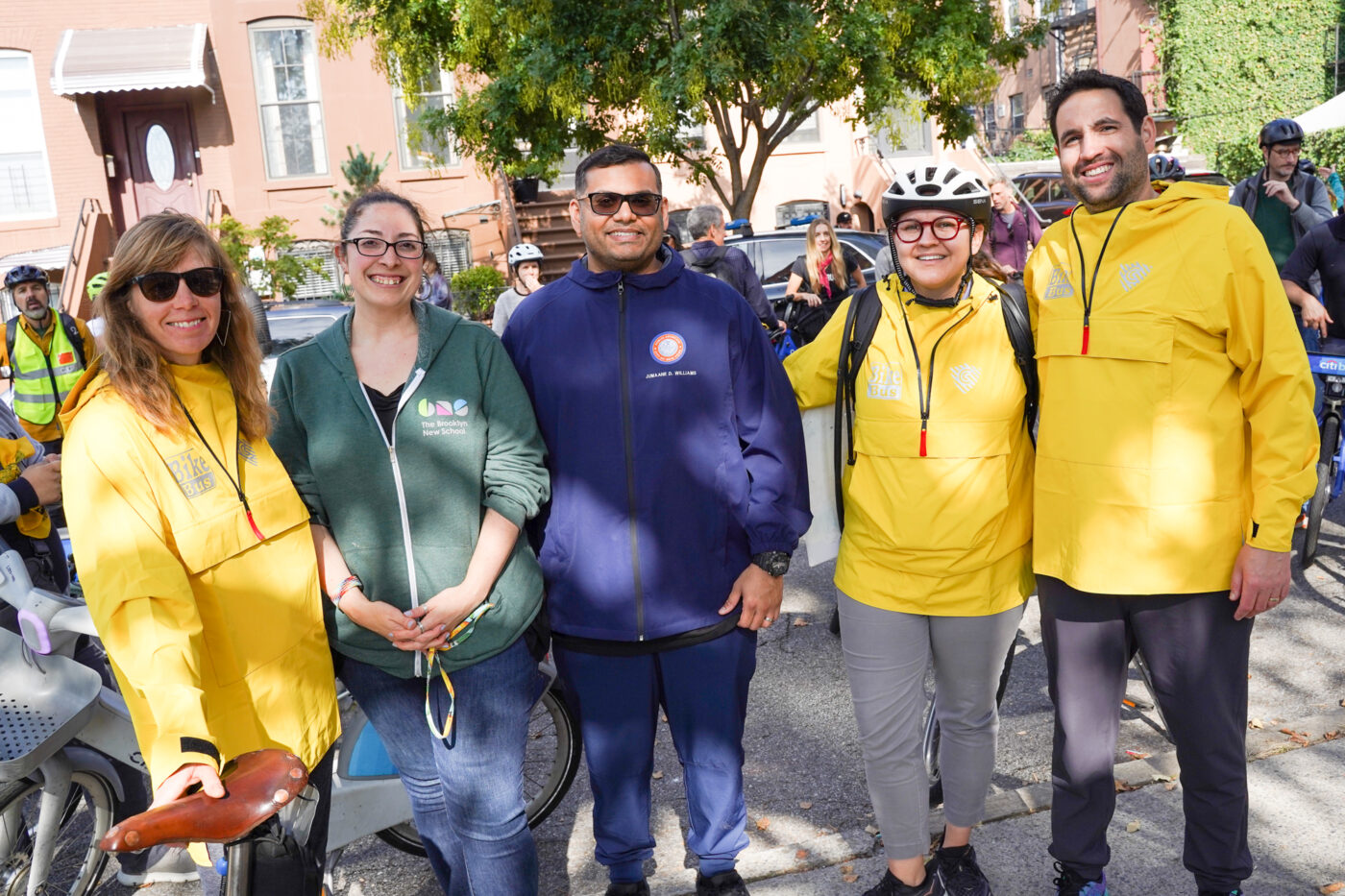
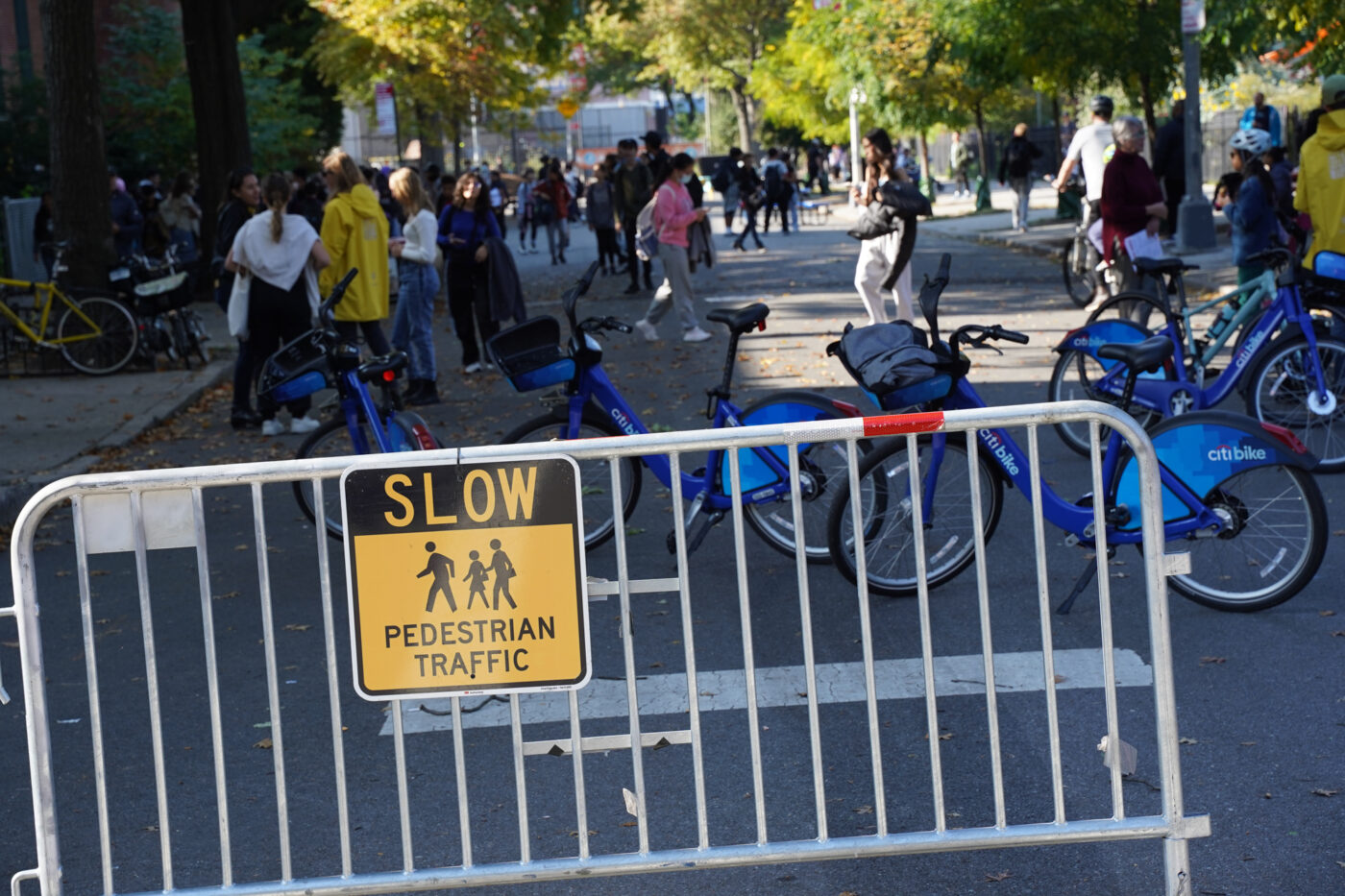
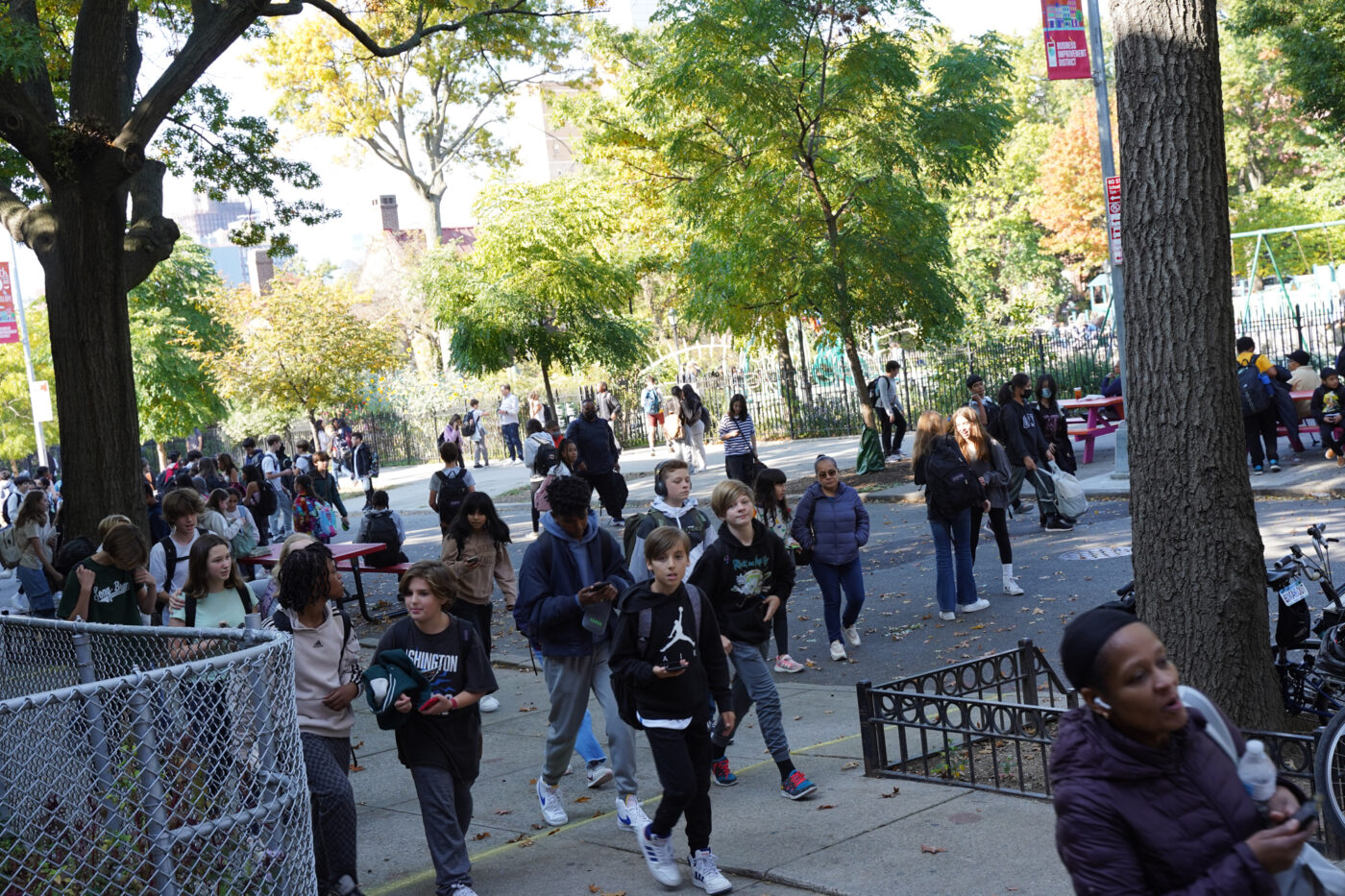
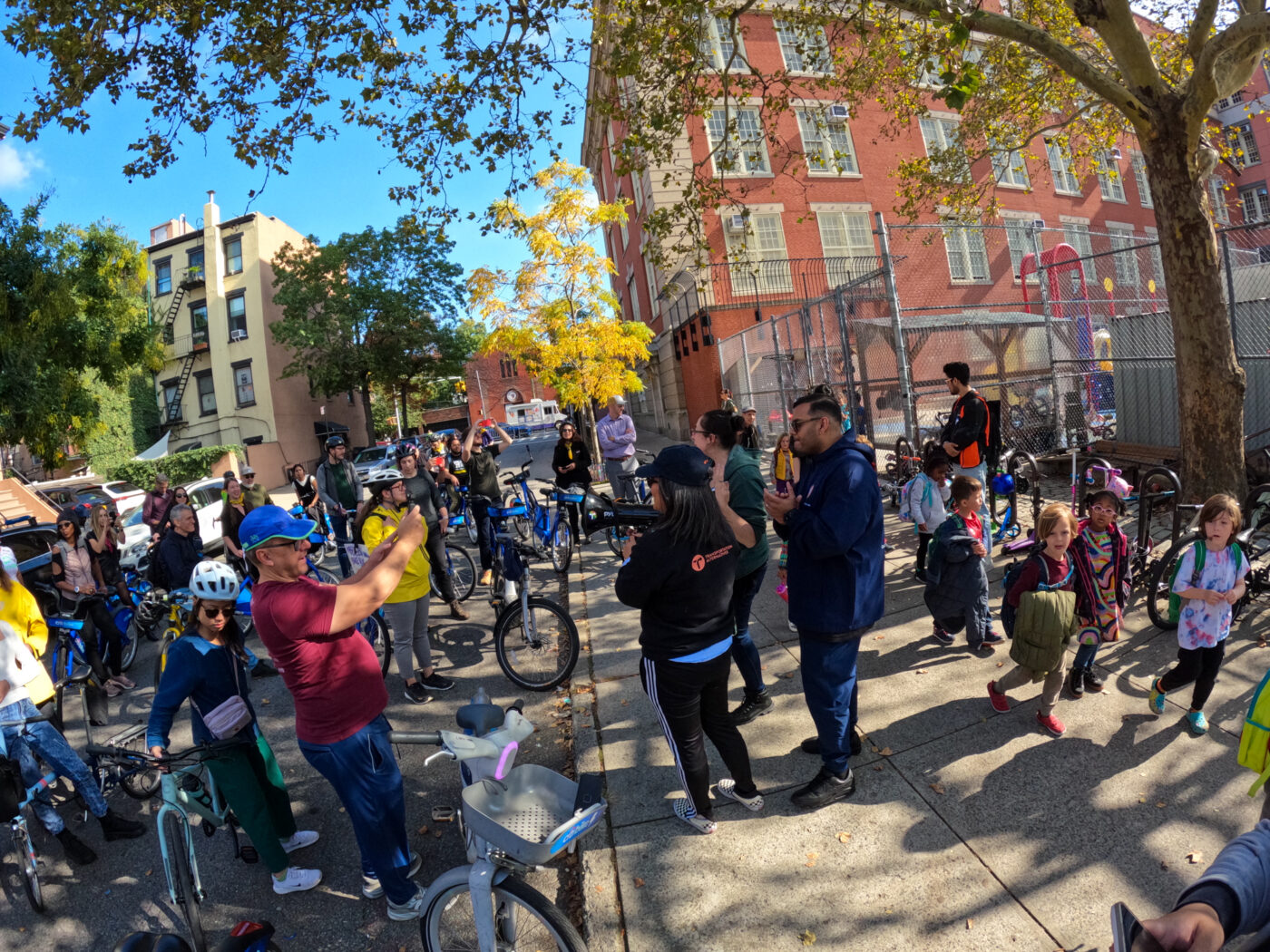
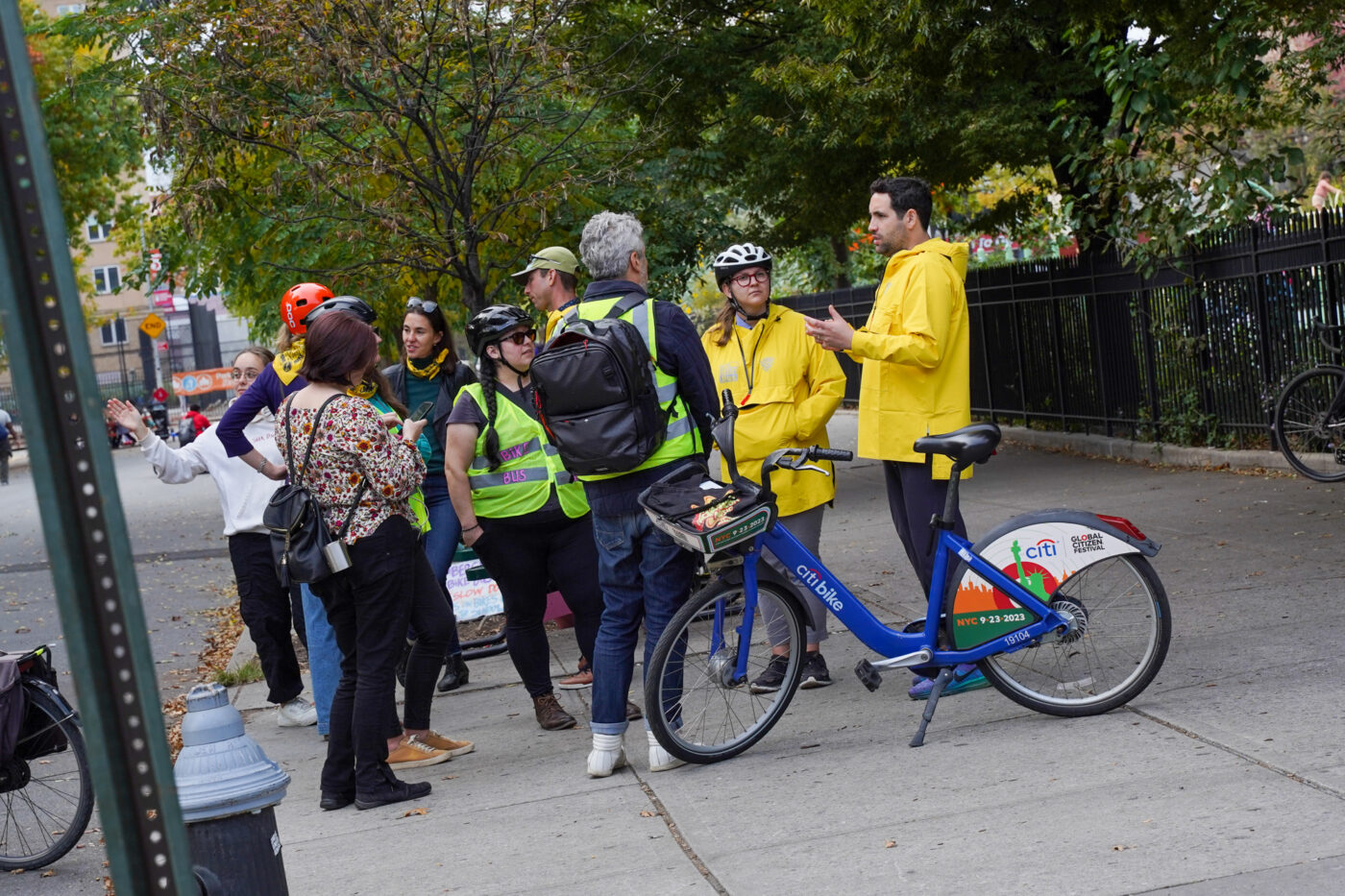
In February of 2022, Brooklyn school teacher Emily Stutts was cooking breakfast with her husband when a podcast featuring Hood River’s Safe Routes to School Manager Megan Ramey came on. “I hear her story and I said to my husband, ‘Someone should do that here,'” Stutts shared with me today as we gathered in Brower Park before the ride. “And he’s like, ‘Yeah, it’s you, you fool! Who else would do it?’ And I was like, ‘No, no, no, it’s someone else, not me,’ and he was like, ‘You’re a teacher, you know all the kids, you ride your bike — I’m pretty sure it’s you.'”
So a few months later, Stutts had created the Bergen Bike Bus. Each morning before school she rides the same, five-mile route and kids and parents from up to 10 schools hop on and off the bus.
Today Stutts and Ramey rode together.
“We all keep saying, ‘Thank you for inspiring me,'” Ramey shared while biking on Stutts’ route. “And I think the feeling is mutual; because without each other we wouldn’t have been able to do this.”
Ramey was inspired to start her “bike train” in 2020 after watching a Streetfilm video shot in Portland in 2013. And of course the person who made that film, the inimitable Clarence Eckerson, was also at today’s ride.
In addition to Ramey and Stutts, other bike bus leaders on the ride included: Sam Balto, leader of the Alameda Bike Bus in Portland; Luke Bornheimer from San Francisco Bike Bus; Andy Hawkins and Jessica Tillyer from Montclair (New Jersey) Bike Bus, and others.
The next stop for the bike bus is to create a national organization. A clearinghouse of sorts, that can guide would-be bike bus leaders and give them the tools to get rolling.
I ran into Luke Bornheimer as he scribbled his name and phone number on the bottom of fliers that had “Bike Bus World” in big red letters across the top.
What’s this? I asked.
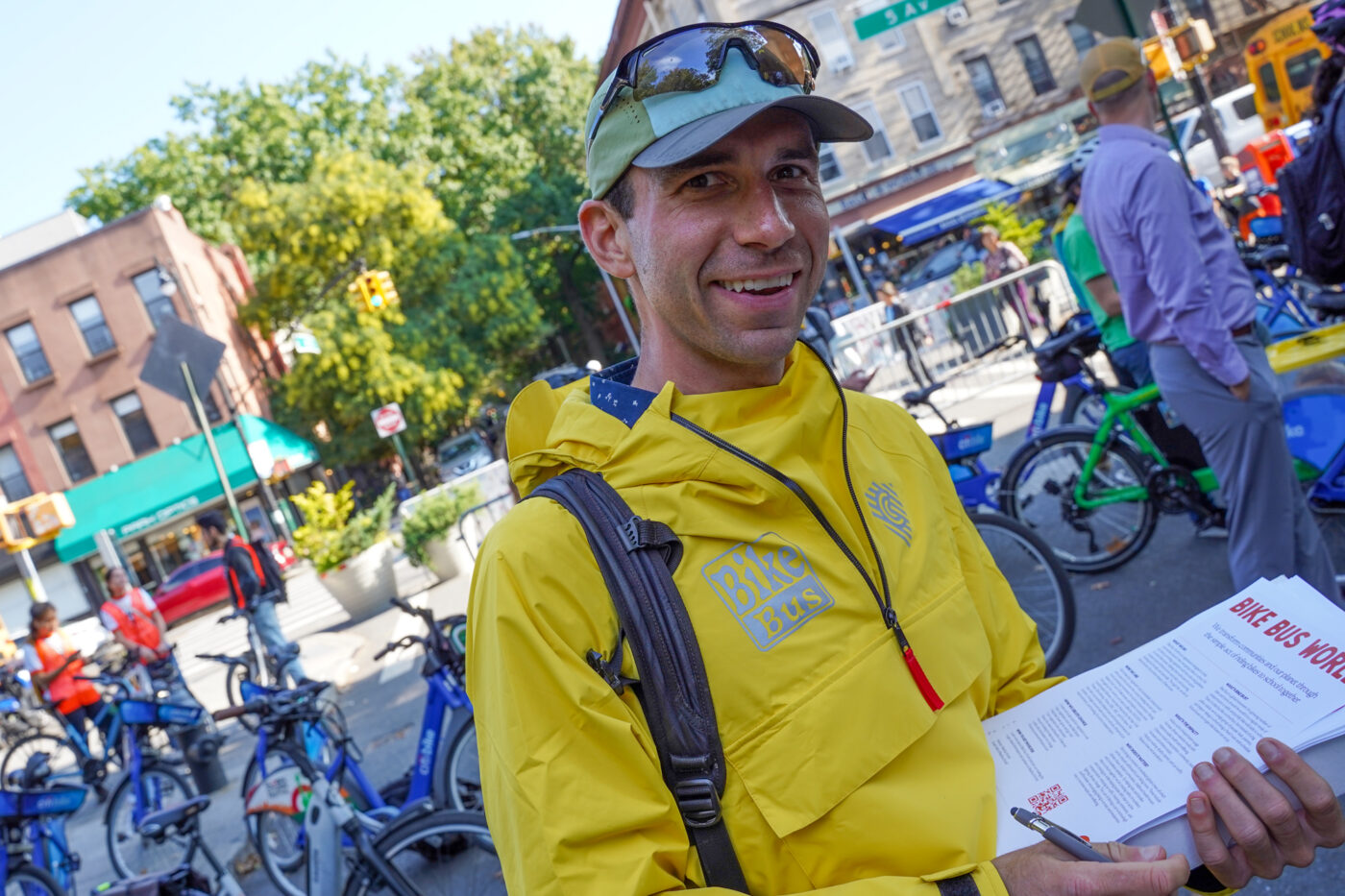
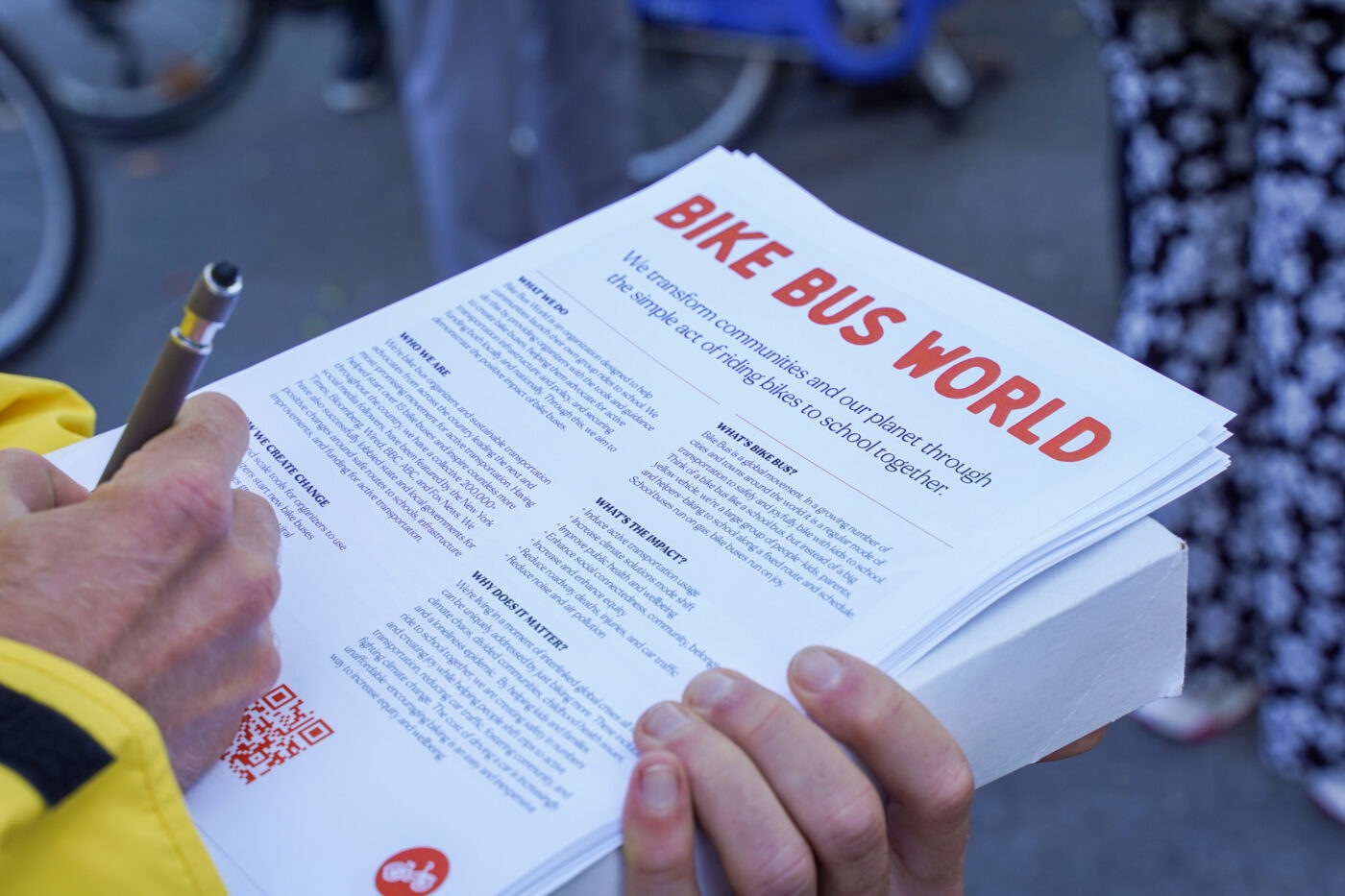
“It’s a national organization that is helping people start and grow bike buses and support them from a national state and city level,” he replied. According to Bornheimer, a lot of people see a bike bus video online and want to start one, but they have no resources or advice on how to do it. “They’re basically reinventing the wheel every single time. And this is happening all across the country,” he said. “What we’re trying to do is solve that problem for people, help them start bike buses, and give them the tools and resources to do it, and advocate for the policy and infrastructure that helps support that.”
On that note, the group stopped by two “school streets” on the ride — carfree streets adjacent to schools that help make drop-off and pick-up safer while providing a larger space for play and community.
At the Brooklyn New School, parents and administrators worked together to get a permit to prohibit drivers from using the street outside the playground. Now they use the space to teach kids how to ride bikes. School principal Diane Castelucci called it, “Extended outdoor learning space,” on the permit paperwork. “And for us, what sort of came naturally and having a nice long open space was a biking program.”
Asked what type of volunteer effort it takes to keep the school street going, Castelucci said, “It’s made a huge difference for our school and being able to have much more outdoor space for our kids has been wonderful. We’ll do whatever it takes to keep it going.”
At another school street in Park Slope, the folks who made it happen said it became such a success that the school moved its main entrance off the busier commercial street and onto the newly carfree one.
There’s a clear nexus from getting more families biking to school, to vision zero. One of the most effective ways to reduce fatal crashes is to simply lower exposure to automobiles. Getting kids and families out of them, and creating safe routes and safe spaces near schools, can save a lot of lives.
And safety is just one of many reasons bike buses are taking off. Actually, that’s hardly the reason at all.
“The very first time I went on a bike bus ride, it was so joyful and uplifting,” Bornheimer told me at a happy hour mixer after the ride. “People talk a lot about policy and infrastructure and how, we hope things will happen. And this is very real. You see it in front of you and it’s like a visceral feeling of, like, knowing this is a very positive thing.”



